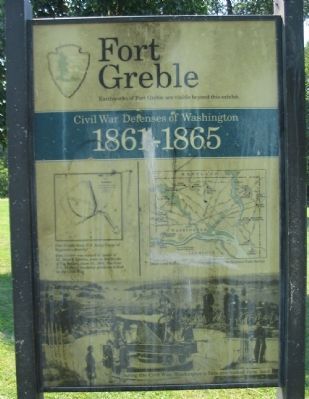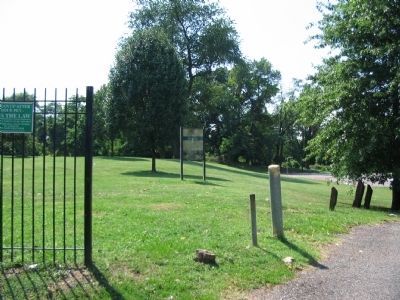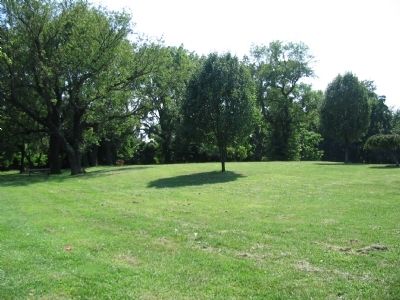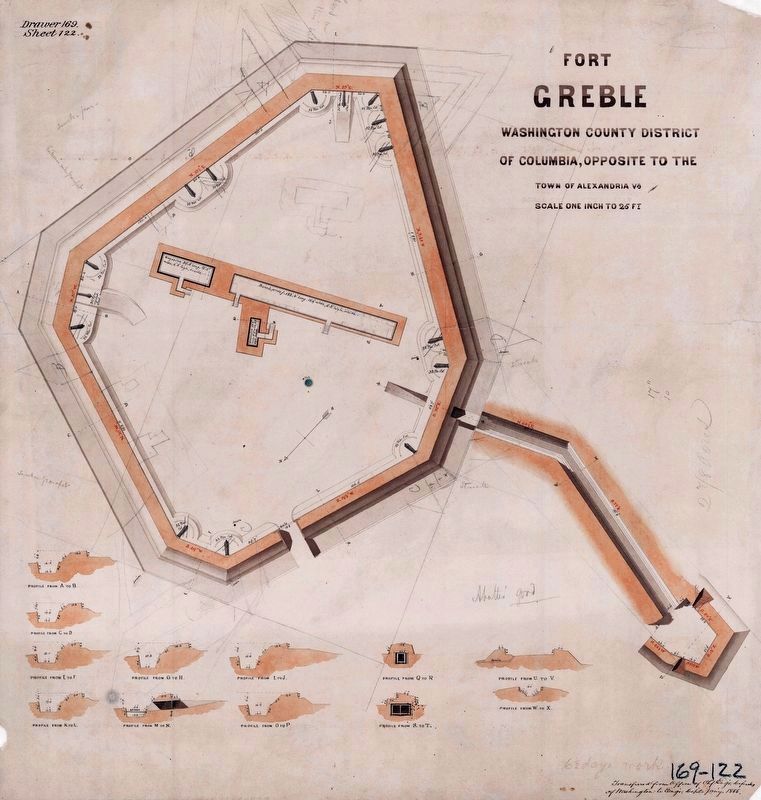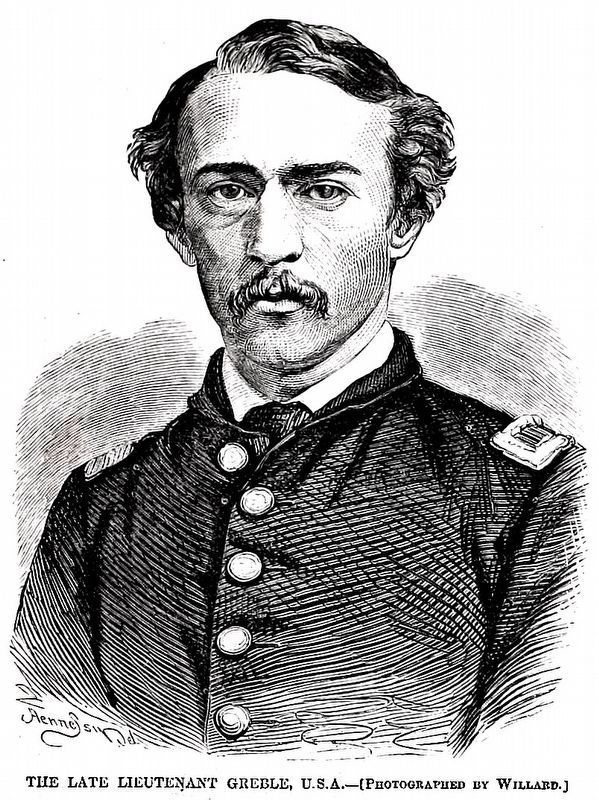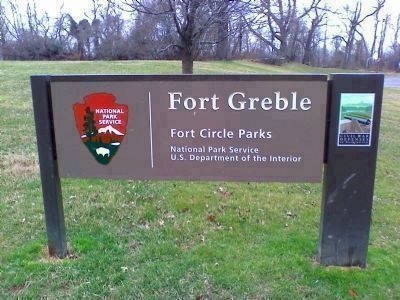Bellevue in Southwest Washington in Washington, District of Columbia — The American Northeast (Mid-Atlantic)
Fort Greble
Civil War Defenses of Washington
— 1861-1865 —
Inscription.
Earthworks of Fort Greble are visible beyond this exhibit.
Fort Greble was named in honor of Lt. John T. Greble, slain at the Battle of Big Bethel, June 10, 1861, the first U.S. Military Academy graduate killed in the Civil War.
Erected by National Park Service, U.S. Department of the Interior.
Topics and series. This historical marker is listed in these topic lists: Forts and Castles • War, US Civil. In addition, it is included in the Defenses of Washington series list. A significant historical date for this entry is June 10, 1855.
Location. 38° 49.565′ N, 77° 0.849′ W. Marker is in Southwest Washington in Washington, District of Columbia. It is in Bellevue. Marker is at the intersection of Elmira Street Southwest and Martin Luther King Jr. Avenue Southwest, on the right when traveling west on Elmira Street Southwest. Located at the entrance to Fort Greble Park. Touch for map. Marker is at or near this postal address: 208 Elmira Street Southwest, Washington DC 20032, United States of America. Touch for directions.
Other nearby markers. At least 8 other markers are within 2 miles of this marker, measured as the crow flies. Original Federal Boundary Stone, District of Columbia, Southeast 7 (approx. 0.8 miles away in Maryland); Fort Carroll (approx. 0.9 miles away); In Memory of Col. Raynal C. Bolling (approx. one mile away); Original Federal Boundary Stone, District of Columbia, Southeast 8 (approx. one mile away in Maryland); Bolling Air Force Base (approx. 1.2 miles away); Republic F-105D Thunderchief (approx. 1.3 miles away); Original Federal Boundary Stone, District of Columbia, Southeast 6 (approx. 1½ miles away in Maryland); Oxon Cove, the Potomac, and the Chesapeake (approx. 1½ miles away in Maryland). Touch for a list and map of all markers in Southwest Washington.
More about this marker. The marker displays a plan of Fort Greble from U.S. Army Corps of Engineers drawing. A map shows other Civil War fortifications surrounding Washington, D.C. The bottom of the marker is a wartime photo of a gun at Fort Totten, captioned During the Civil War, Washington's forts overlooked farm land.
Related marker. Click here for another marker that is related to this marker. To better understand the relationship, study each marker in the order shown.
Also see . . .
1. Fort Greble. Additional information on the fort and the service history. (Submitted on August 22, 2008, by Craig Swain of Leesburg, Virginia.)
2. Battery Carroll and Fort Greble
. National Park Service page on the fort and nearby Battery Carroll. (Submitted on August 22, 2008, by Craig Swain of Leesburg, Virginia.)
3. Lt. John Trout Greble. (Submitted on March 13, 2011, by Richard E. Miller of Oxon Hill, Maryland.)
Additional commentary.
1. Fort Greble Particulars
From "Mr. Lincoln's Forts: A Guide to the Civil War Defenses of Washington," by Benjamin Franklin Cooling III and Walton H. Owen II:
Fort Greble had a perimeter of 327 feet and was octagonal in shape. The Fort's armament included six 12-pdr field guns, six 32-pdr, seacoast guns, two 8-in siege howitzers, one 30-pdr Parrott rifle, one 10-inch siege mortar, and one 24-pdr Coehorn. A battery just to the south of the fort had positions for four more guns, but was never occupied.
Units that garrisoned the fort at different times included elements of the 4th and 10th New York Heavy Artillery, 17th and 19th Maine Volunteer Infantry, 2nd U.S. Infantry, 3rd Massachusetts Heavy Artillery, 14th Michigan Battery, and 12th U.S. Infantry (post war).
The fort was constructed largely with civilian labor from northern cities, paid at rates between 40 and 90 cents per day, with carpenters and other specialists receiving up to $3.00.
After the war, the fort was retained for use as a signal station.
But after 1867 the ground was returned to the original owners. In the opinion of the Army, the lumber and shingles remaining in the fort's structures was ample compensation for the use of the land. The property's trustee, a Thomas W. Berry of Baltimore, was less impressed. He responded, "We are not disposed to accept the proposition because with the Fort it would be like a Man with an Eliphant."
— Submitted August 22, 2008, by Craig Swain of Leesburg, Virginia.
Credits. This page was last revised on March 11, 2024. It was originally submitted on August 22, 2008, by Craig Swain of Leesburg, Virginia. This page has been viewed 3,212 times since then and 38 times this year. Last updated on March 13, 2011, by Richard E. Miller of Oxon Hill, Maryland. Photos: 1, 2, 3. submitted on August 22, 2008, by Craig Swain of Leesburg, Virginia. 4, 5. submitted on March 11, 2024, by Allen C. Browne of Silver Spring, Maryland. 6. submitted on February 17, 2012, by Richard E. Miller of Oxon Hill, Maryland.
